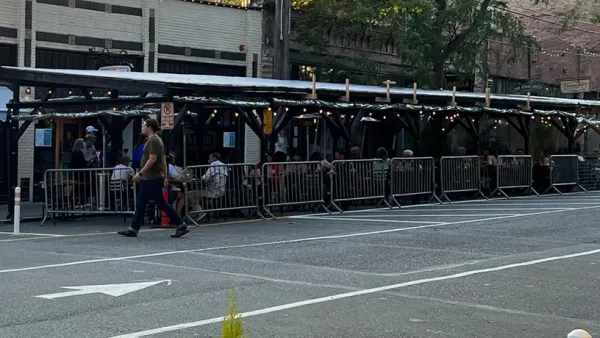A strongly worded opinion piece calls out historic preservation as a tool of the affluent urban elite.

Binyamin Appelbaum, a member of the editorial board of the New York Times, writes a criticism of historic preservation in the wake of a controversy about solar panels on historic homes in the historic district of Capitol Hill in Washington, D.C, where Appelbaum lives.
Here's how Appelbaum summarizes the conflict:
Humans don’t like change, so it’s not surprising that historic preservation laws have become quite popular. There are now more than 2,300 local historic districts across the United States, and I know many people who would like to have their own neighborhood frozen in time.
But historic preservation comes at a cost: It obstructs change for the better. And while that price is generally invisible, it is now on public display because of the city’s efforts to prevent Washington homeowners in historic neighborhoods from installing visible rooftop solar panels.
Appelbaum describes some of the very strict rules the Capitol Hill historic district has for alterations to homes in the area, and with some of these restrictions it shouldn't be hard to imagine that solar panels aren't welcome, even in the midst of climate change. An October controversy over a D.C. homeowner's petition to add solar panels created an uproar, leading to some changes that will make it easier to "a little easier to win permission to put solar panels on historic homes," according to Appelbaum, but "the fact that Washington continues to impose any aesthetic restrictions on rooftop solar panels is still a problem — and it is emblematic of the broader problems with preservation."
That problem, according to Appelbaum, has less to do with preserving history, and more to do with preserving "the lifestyle of an affluent urban elite."
FULL STORY: When Historic Preservation Hurts Cities

National Parks Layoffs Will Cause Communities to Lose Billions
Thousands of essential park workers were laid off this week, just before the busy spring break season.

Retro-silient?: America’s First “Eco-burb,” The Woodlands Turns 50
A master-planned community north of Houston offers lessons on green infrastructure and resilient design, but falls short of its founder’s lofty affordability and walkability goals.

Delivering for America Plan Will Downgrade Mail Service in at Least 49.5 Percent of Zip Codes
Republican and Democrat lawmakers criticize the plan for its disproportionate negative impact on rural communities.

Test News Post 1
This is a summary

Test News Headline 46
Test for the image on the front page.

Balancing Bombs and Butterflies: How the National Guard Protects a Rare Species
The National Guard at Fort Indiantown Gap uses GIS technology and land management strategies to balance military training with conservation efforts, ensuring the survival of the rare eastern regal fritillary butterfly.
Urban Design for Planners 1: Software Tools
This six-course series explores essential urban design concepts using open source software and equips planners with the tools they need to participate fully in the urban design process.
Planning for Universal Design
Learn the tools for implementing Universal Design in planning regulations.
EMC Planning Group, Inc.
Planetizen
Planetizen
Mpact (formerly Rail~Volution)
Great Falls Development Authority, Inc.
HUDs Office of Policy Development and Research
NYU Wagner Graduate School of Public Service





























